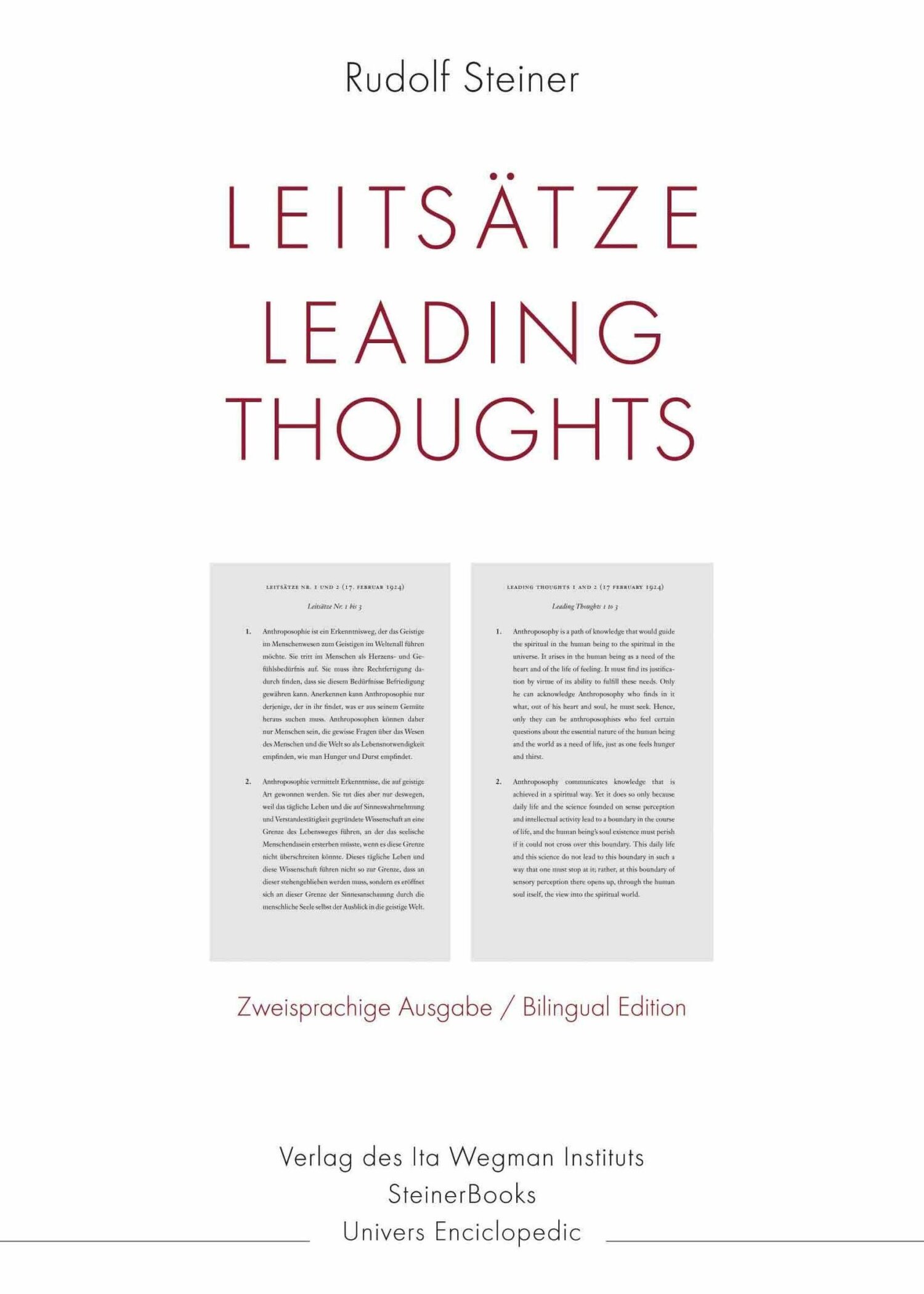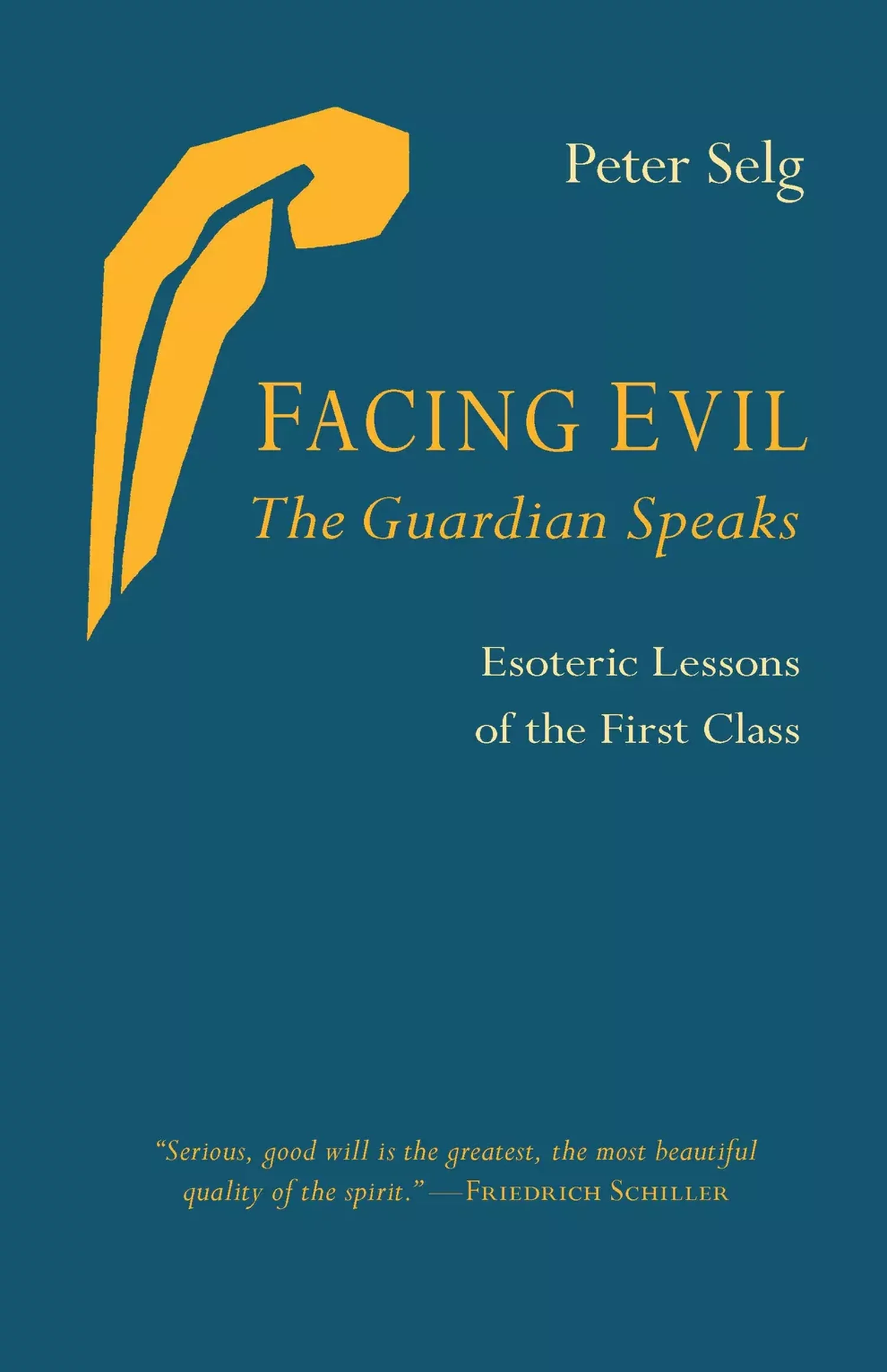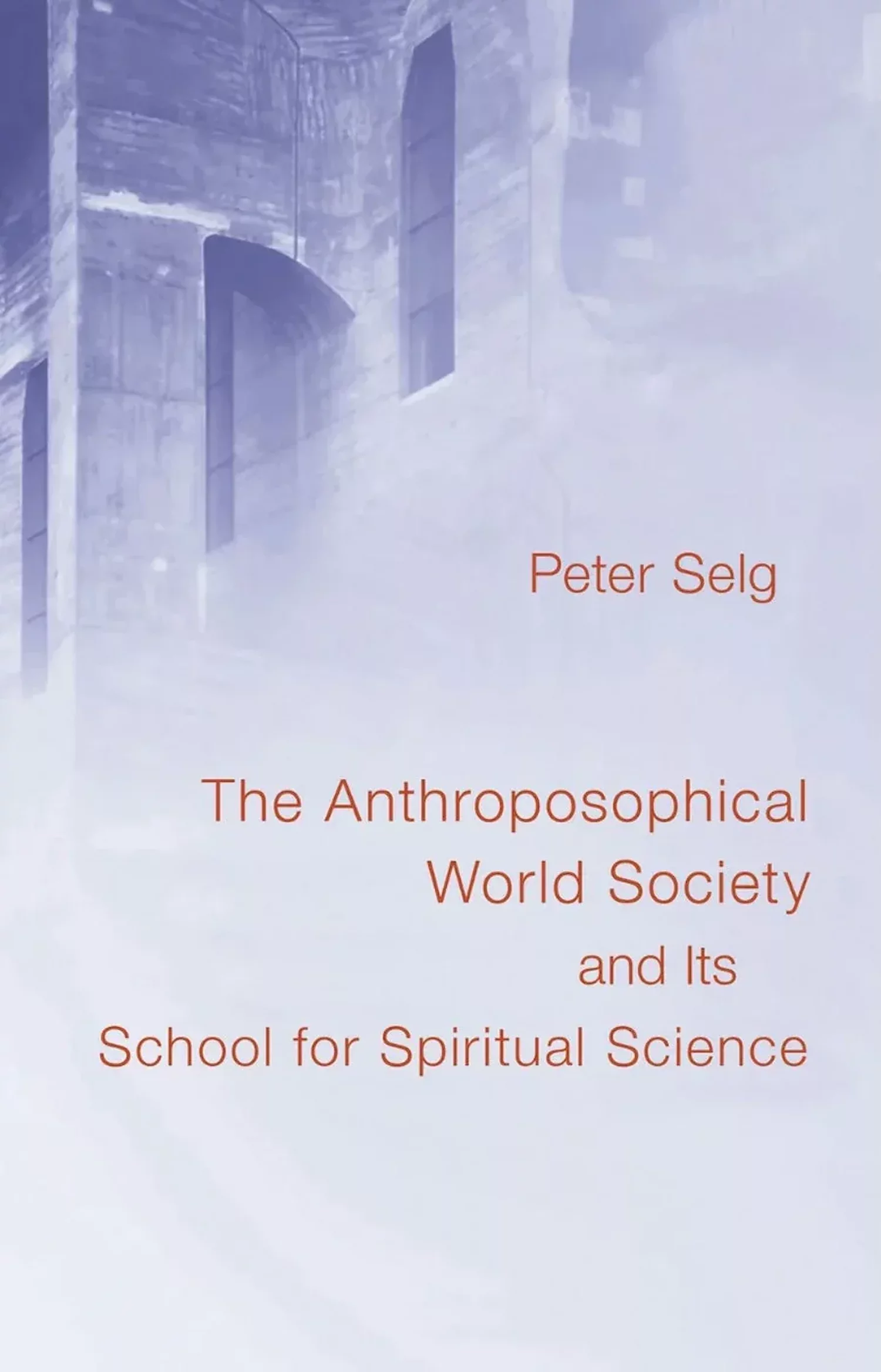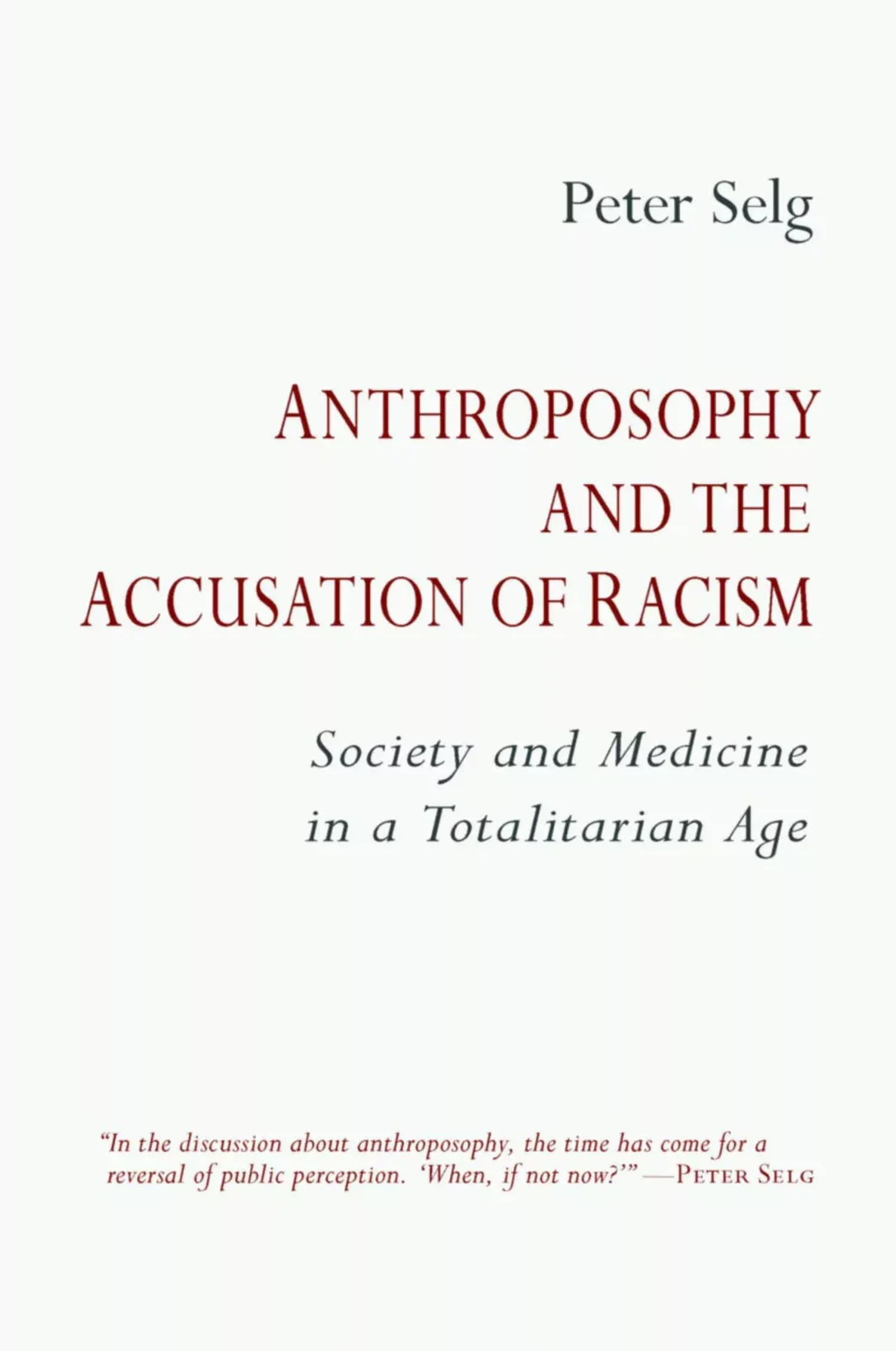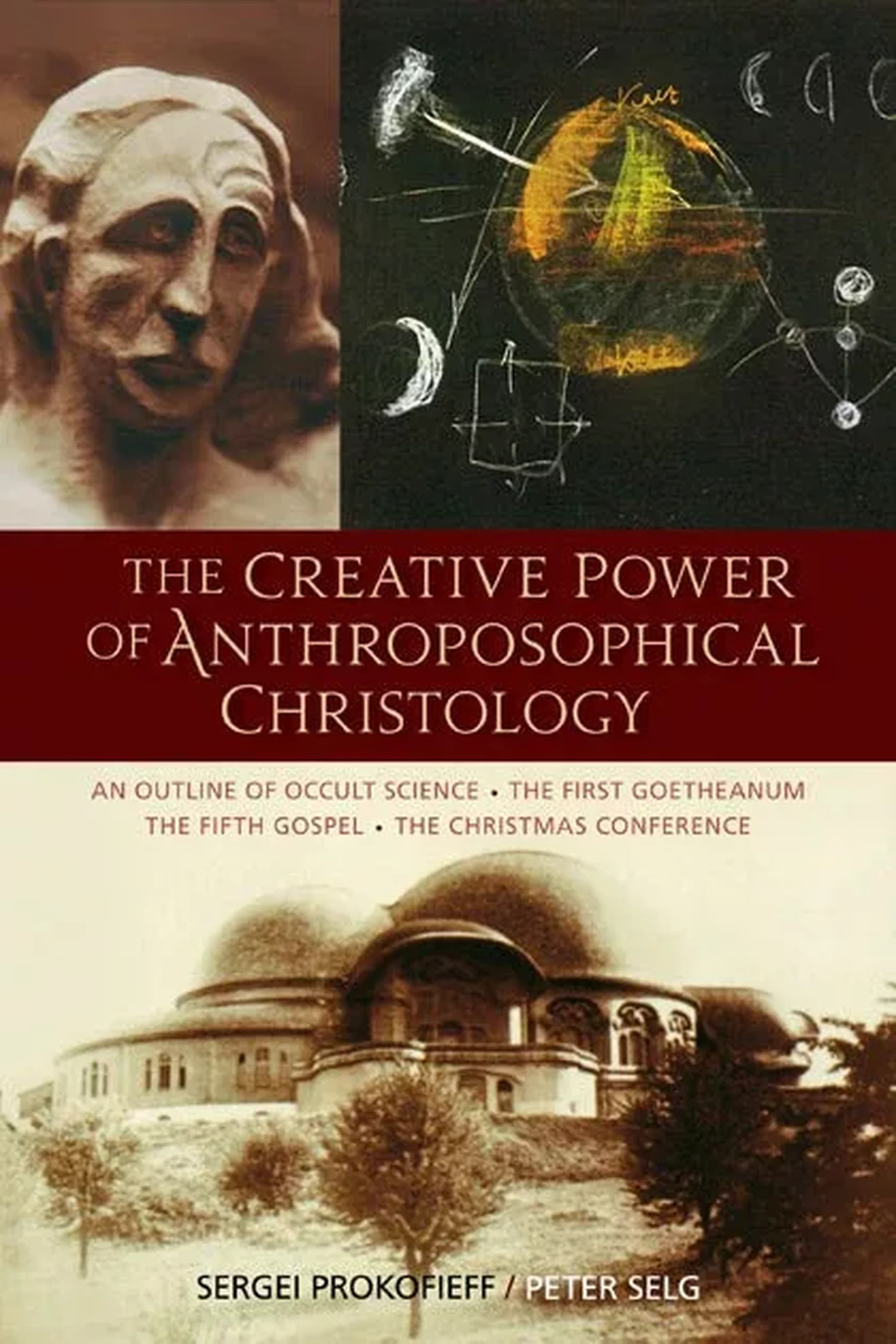



Publications
Rudolf Steiner in der Öffentlichkeit. Rudolf Steiner in Public Life
Leitsätze – Leading Thoughts Bilingual Edition (CW 26)
Rudolf Steiner
“Anthroposophy is a path of knowledge
that would guide the spiritual in the human
being to the spiritual in the universe.”
This newly revised special edition of the Leading Thoughts (CW 26), coinciding with the 100th anniversary of Rudolf Steiner’s death (March 30, 2025), marks the first ever bilingual (German-English) publication of his final written work, which he largely composed in the last months of his life (October 1, 1924–March 30, 1925). The Leading Thoughts and the essays that introduce them form the culmination of Steiner’s endeavors to communicate the essence of anthroposophical spiritual science. They deal with the dawn of the Consciousness Soul Age, with Michael’s battle with Ahriman for human intelligence, with the forces of Christ and Anti-Christ, with the future of the Earth and humanity.
As his last written testament, this volume stands as a bulwark against the dehumanizing forces of modern civilization and as a call to all who would look earnestly at the state of our world and choose, in freedom, to seek a human way forward.
Facing Evil and the Guardian Speaks Esoteric Lessons of the First Class
Peter Selg
The two essays published here were written on the basis of lectures given to members of the School for Spiritual Science. Their content therefore deals directly with the path of inner development outlined in the lessons of the First Class of the School.
In the first essay, Selg address the necessary confrontation with the powers of evil as they appear in the Class Lessons and in our time more broadly. Only through confronting and overcoming these powers are we able to find the path to our true humanity.
The second essay deals with the figure of the Guardian of the Threshold as a Michaelic teacher and guide along the soul’s path into the spiritual world. This figure, Selg argues, is far too little understood in our time. He is a spiritual being of great significance who offers help to all earnest seekers.
This book represents an ongoing effort on the part of Peter Selg and the leaders of the General Anthroposophical Section at the Goetheanum to deepen and internalize the work with the Class Lessons for all members of the School for Spiritual Science.
This book is comprised of translations of texts originally published in German by Verlag des Ita Wegman Instituts: Die Auseinandersetzung mit dem Bösen: Zur Schulung der « Ersten Klasse ». Hochschulvorträge Band 1 (2019); Die Sprache des Hüters: Zur Schulung der « Ersten Klasse ». Hochschulvorträge Band 2 (2020).
Anthroposophical World Society and Its School for Spiritual Science
Peter Selg
In light of the centenary of the Christmas Conference 1923/24, Peter Selg has written the four essays published here, which deal, each in its own way, with the past, present, and future of the Anthroposophical Society and its School for Spiritual Science. Selg outlines important historical background to the Christmas Conference, shedding light on the origins of the re-founding of the Society, what necessitated it, and what Rudolf Steiner was hoping to achieve.
Though much good work has been done over the past hundred years, many of the issues that hindered the Society and movement in Steiner's time still persist today. This book is intended as a call to self-knowledge for members of the Anthroposophical Society, a call to actively take up the work of "furthering the development of the task-centered worldwide Society that Steiner made so clearly visible in 1923."
Rudolf Steiner's words, spoken one hundred years ago, retain their power and urgency today: "Try to grow together with the world! That will be the best, the most significant 'program.' That cannot be put in our statutes--but we should be able to take it as a flame into our hearts."
This book is a translation of Die anthroposophische Weltgesellschaft und ihre Hochschule, originally published in German by Verlag am Goetheanum (Dornach, 2023) in collaboration with the General Anthroposophical Section of the School for Spiritual Science.
On the Path to Birth The Placenta of the Unborn
Peter Selg
At the annual conference of the Medical Section on 13 September 2023 in the South Hall of the Goetheanum, Peter Selg spoke to midwives from many countries about the anthroposophical understanding of the individual, the unborn child, the placenta and the path to birth. The lecture was simultaneously translated into several languages and recorded. At the request of the Association for Anthroposophic Midwives (VfAH), the lecture has now been published in two languages in written form, with only minor stylistic revisions – in German and in English translation by Marguerite and Douglas Miller (USA).
Anthroposophy and the Accusation of Racism Society and Medicine in a Totalitarian Age
Peter Selg
The original subtitle of Rudolf Steiner’s Philosophy of Freedom (1894)—“the basis for a modern worldview”—points to the lifelong project with which he was engaged: laying the basic groundwork for modern (contemporary) human beings to be able to comprehend the world in which we live, beginning with ourselves as individual, utterly unique embodiments of humanity.
It’s a spiritual worldview born of the essence of the modern scientific reckoning with knowledge. But its detractors, critics, and outright opponents, speaking from the standpoint of other worldviews and denying the validity of this one, from the early 1900s to today, have continued to portray it in a very different light. One such critic, typical of others, writing in 2019, deemed it “dogmatic, irrational, anti-Enlightenment, racist . . .”
Those with even a passing knowledge of this worldview and the fruits of its application to life may wonder how such a modern, innovative, universally inclusive, and rational approach—one that has led to such positive and beneficial results in the world—could be so distorted and defamed. What is the substance of these accusations and are they at all well-founded?
With this book, out of his comprehensive grasp of Steiner’s work (its history, background, and subsequent development), together with the contextual background of twentieth-century European totalitarianism and the contemporary landscape, Peter Selg addresses these and other related questions head on.
The Anthroposophical Society The Understanding and Continued Activity of the Christmas Conference
Peter Selg and Marc Desaules (Eds.)
In 2014, the Anthroposophical Society in Switzerland launched a series of conferences to deepen the impulse of the 1923 Christmas Conference, the event that Rudolf Steiner referred to as a “festival of consecration” for the “beginning of a turning point of time.” The goal of the conferences was to develop a deeper understanding of the Anthroposophical Society’s essential task and contribute to shaping its future.
This volume presents six talks from the conference in February 2016, the purpose of which was to let the Anthroposophical Society as an archetypal phenomenon speak to us. This society planted a seed of humanity and the model of a legal entity whose future potential and perspectives are yet to be discovered. It is a social organism that exhorts us to put our karma in order, carry what is close to our hearts into the world, and by doing so experience the presence and support of the divine spirit.
These edited transcriptions of six lectures—by Peter Selg, Stefano Gasperi, Mario Betti, Johannes Greiner, Gioia Falk, and Marc Desaules—encourage us to move closer to a deeper existential relationship to the Anthroposophical Society and movement, experienced through others and discovered within ourselves.
Originally published in German as Die Anthroposophische Gesellschaft. Beiträge zum Verständnis und zum Weiterwirken der Weihnachtstagung, Band 3 (Verlag des Ita Wegman Instituts, 2016).
The Confirmation of Kaspar Hauser
Peter Selg
During the 2018 Kaspar Hauser Festival in Ansbach, Germany, Peter Selg assumed the task of understanding the individuals in Kaspar Hauser's life and comprehending their significance for his destiny. He begins by unfolding the sociopolitical and philosophical milieu during Hauser's life, starting with Friedrich Hölderlin and other significant luminaries of the time. A fellow student and friend of Hölderlin said of Kaspar Hauser, "His fine facial features, his gentle expression, his beautiful bearing, his carefully tended attire, and the unmistakable loftiness expressed in his being have always remained with me," saying further, "Whoever saw him loved him, and whoever became acquainted with him remained his friend."
Selg compares the biographies of Kaspar Hauser and Rudolf Steiner, who stated, "If Kaspar Hauser had not lived and died as he did, the contact between the earth and the spiritual world would have been completely broken." And Selg points out, "Through his path of suffering, Hauser prepared something that would allow new life and a new 'teaching' to enter the earthly realm."
We are also able to witness Kaspar Hauser's confirmation ceremony of May 20, 1833, in the Swan Knight Chapel of the Gumbertus Church in Ansbach. Eckart Böhmer, director of the Kaspar Hauser Festival, wrote, "Kaspar Hauser's confirmation, probably in his 21st year, is possibly the brightest event of his short life."
This book is a translation from German of the book Schicksals-Weihe. Die Konfirmation Kaspar Hausers (Verlag des Ita Wegman Instituts, Stuttgart, 2018) and chapters 1 & 2 from Das andere Deutschland. Über Friedrich Hölderlin, Kaspar Hauser und Rudolf Steiner (Verlag des Ita Wegman Instituts, Stuttgart, 2016).
The Creative Power of Anthroposophical Christology An Outline of Occult Science – The First Goetheanum – The Fifth Gospel – The Christmas Conference
Sergei O. Prokofieff and Peter Selg, two leading authorities and spiritual researchers into the life and work of Rudolf Steiner, gave a series of conferences from 2009 to 2010 on the Christological foundations of Anthroposophy. Their aim was to show the power of anthroposophic Christology. Thus, they focused on key turning points in Steiner’s exposition—his major work, An Outline of Esoteric Science; the first Goetheanum; the reappearance of Christ in the etheric realm and its relationship to Rudolf Steiner’s lectures on the Fifth Gospel; and the Christmas Conference of 1923/1924 and the founding of the New Mysteries. The lectures from these conferences, published as four booklets in German, are collected here in a single volume. The Creative Power of Anthroposophical Christology will prove to be an important work for anyone interested in the true meaning and depth of Rudolf Steiner’s experience and understanding of Christ’s act on Golgotha and his continuing presence among us and within Anthroposophy.
Rudolf Steiner and Christian Rosenkreutz
Peter Selg
Rudolf Steiner spoke often of the relationship of Anthroposophy or Spiritual Science to Rosicrucianism, but he spoke less of the being of Christian Rosenkreutz himself. As he said, “To speak of Christian Rosenkreutz presumes a profound trust in the mysteries of the life of the spirit—a trust or faith not in the person of Christian Rosenkreutz, but in the mysteries of spiritual life.”
For Steiner, Christian Rosenkreutz was active in at least three ways. First, as one of the “great leaders of humanity,” he worked to bring esoteric spirituality into the modern world and to lead it into the future. Second, as “the greatest teacher of Christianity” he worked to bring to humanity true “heart knowledge” of Christ through the continued unveiling of the Mystery of Golgotha in the etheric. Third, as a concrete, particular individual being, Steiner had a living, actual, personal relationship with him. As such, because of our failure to understand, Steiner called him “a noble martyr...who, through his way of working, endured, and will in future endure, more than any other person. I say ‘person,’ for the suffering of Christ was the suffering of a god.”
In the first part of this inspiring book—a work of devotion both to Rudolf Steiner and to Christian Rosenkreutz—Peter Selg, as “The Great Servant of Christ Jesus,” gives a detailed, chronological, and fascinating account of Steiner’s portrayal and, as much as possible, experiences of Christian Rosenkreutz. He shows how Steiner had essentially two teachers: the Master Jesus (Zoroaster) and Christian Rosenkreutz. Moreover, Selg shows how these two, with Rudolf Steiner, unfolded spiritual science for our time. In the second part, he shows how all this culminates, astonishingly and miraculously, in the Michael School as it manifested in the First Class.
Rudolf Steiner and Christian Rosenkreutz concludes with an appendix containing the text of the original (1614) Fama, or “Announcement of the Rosicrucian Brotherhood.”
All those interested in the esoteric foundations of Anthroposophy or in the true meaning of Rosicrucianism will be find this book of great value.

